Arts & Culture
Unforgettable: Filipino Artists Earn Significant Attention at Hong Kong Art Fairs
Editor-at-large Melo Esguerra take a look at the Filipino artwork highlighted at Hong Kong Art Week, and muses that its exciting times for the art scene.
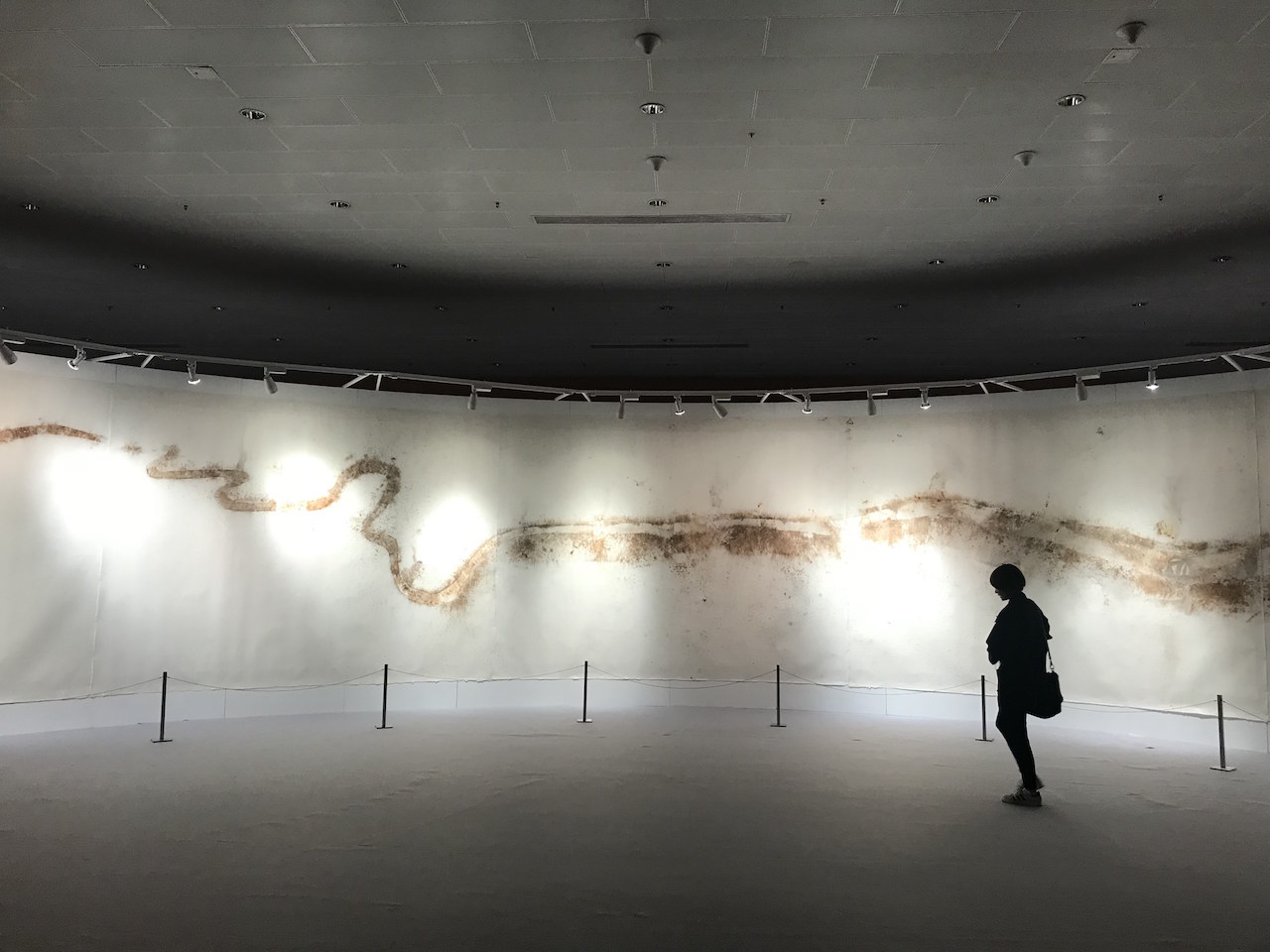
In less than a decade, Hong Kong’s art market has matured into a certified powerhouse, growing into the third largest in the world, behind only New York and London. Art fairs and galleries have blossomed in the city–and the local art scenes thrive alongside them. Even the streets of the city are coming alive with art like never before.

In awe of Japanese artist Shinji Ohmaki’s Liminal Air SpaceTime (2018), presented by Mind Set Art Center. This installation takes a once solid object and dissolves it into a kinetic sculpture, creating an illusion of air as form.
The success of Art Basel Hong Kong (now on its sixth edition) has led a host of other art occupying the city. Art Central is timed to coincide with Art Basel, but aims for a more Asian focus. The twice-yearly Asia Contemporary Art Fair is a far more intimate affair, set over four floors of the Conrad Hotel. Auctions at Sotheby’s and Christie’s have set global records, trading everything from rare diamonds, to Basquiat and Fernando Zobels too.
This year, Art Basel reported that the show brought together a global mix of galleries spanning six continents, and outstanding artworks by established and new artists from across the world. It has become a singular gathering of international collectors and institutions, many of whom are first-time visitors of the show.

Blurring the boundaries between public and private spaces, Chou Yu-Cheng explores the concept of hygiene, technology and the distribution of labor through sculpture, performance and recital in his installation titled: Refresh, Sacrifice, New Hygiene, Infection, Clean, Robot, Air, Housekeeping, www.agentbong.com, Cigarette, Dyson, Modern People. (2017)
“Art Basel drives the cultural agenda and art scene in Asia with its annual show in Hong, and attracts many collectors, influential curators and art lovers from across the globe,” said Pearl Lam, founder and owner of Pearl Lam Galleries in Hong Kong, Shanghai and Singapore. I couldn’t agree more.
Four leading galleries from Manila presented strong shows at the Art Basel this year, giving Filipino artists significant attention at the fair: 1335 Mabini, Artinformal, The Drawing Room, and Silverlens.

Utopian Cargo oil on canvas, 2017 by Manuel Ocampo. This work has been exhibited at the Pavilion of the Philippines at the 57th Venice Biennale last year.
I also spotted international galleries who were highlighting Filipino artists in their shows. Two of Manuel Ocampo’s artworks exhibited at the Philippine Pavilion at the 57th Venice Biennale, were highlighted at the show of Paris and Brussels-based Galerie Nathalie Obadia.

Artwork by Filipino artists Alfredo and Isabel Aquilizan, presented by STPI
Singapore-based STPI-Creative Workshop and Gallery, which specializes in artistic experimentation in the medium of print and paper, exclusively presented the works of Alfredo and Isabel Aquilizan.

At the opening night of Altered Ego by Alfredo Esquillo, presented by J Studio at the Art Central. Left to right, artist Alfredo Esquillo, Melo Esguerra, Valentien Willie, and Jia and Gabbie Estella.
At the Art Central, it was a sold-out show on its opening day for J Studio, who presented a solo show of Filipino artist Alfredo Esquillo entitled Altered Ego.

Market by Fernando Amorsolo, oil on canvas, mounted on board, 1948. On sale at Sotheby’s.
Sotheby’s highlighted Southeast Asian Art at their First Look: Hong Kong Spring Sales. Rare artworks in color by Fernando Zobel were on sale, together with the works of Fernando Amorsolo, Jose Joya, Geraldine Javier, Pacita Abad, Benedicto “BenCab” Cabrera, Ronald Ventura, among others.
With FIlipino artists and galleries’ strong showing at the Hong Kong art fairs this year, I am so optimistic that we will be raising our game next year. Exciting times ahead for the Philippine artists, curators, galleries and art scene as a whole.
More photos from the exciting show below!

Melo Esguerra in front of Ulla von Brandenburg’s 7 Curtains, presented by Pilar Corrias and Meyer Riegger. This installation explores how stories and rituals of the past constitute present societies. Viewers are invited to participate in her temporary ‘soft’ architecture, by walking through large painted bamboo curtains that materialize their movements.

A rare artwork in color by Fernando Zobel on sale at Sotheby’s

Shapes and Squares (1970) by Benedicto “BenCab” Cabrera

Artwork by Filipino artists Alfredo and Isabel Aquilizan

Remembrance (2018) by Gregory Halili, presented by Silverlens Gallery

So happy to bump into actor and art collector John Lloyd Cruz at Art Basel HK. I can’t wait to see his growing collection.

A powerful artwork made of gun powder and ink by Cai Guo-Qiang entitled Project to Extend The Great Wall of China by 10,000 Meters: Project for Extraterrestrials No. 10 (in five pieces, on sale at Sotheby’s)

Crying by Geraldine Javier, oil and embroidery on canvas in four parts, executed in 2011

Flower Garden by Marina Cruz, oil on canvas 2016. On sale at Sotheby’s.
Arts & Culture
Visayas Art Fair Year 5: Infinite Perspectives, Unbound Creativity
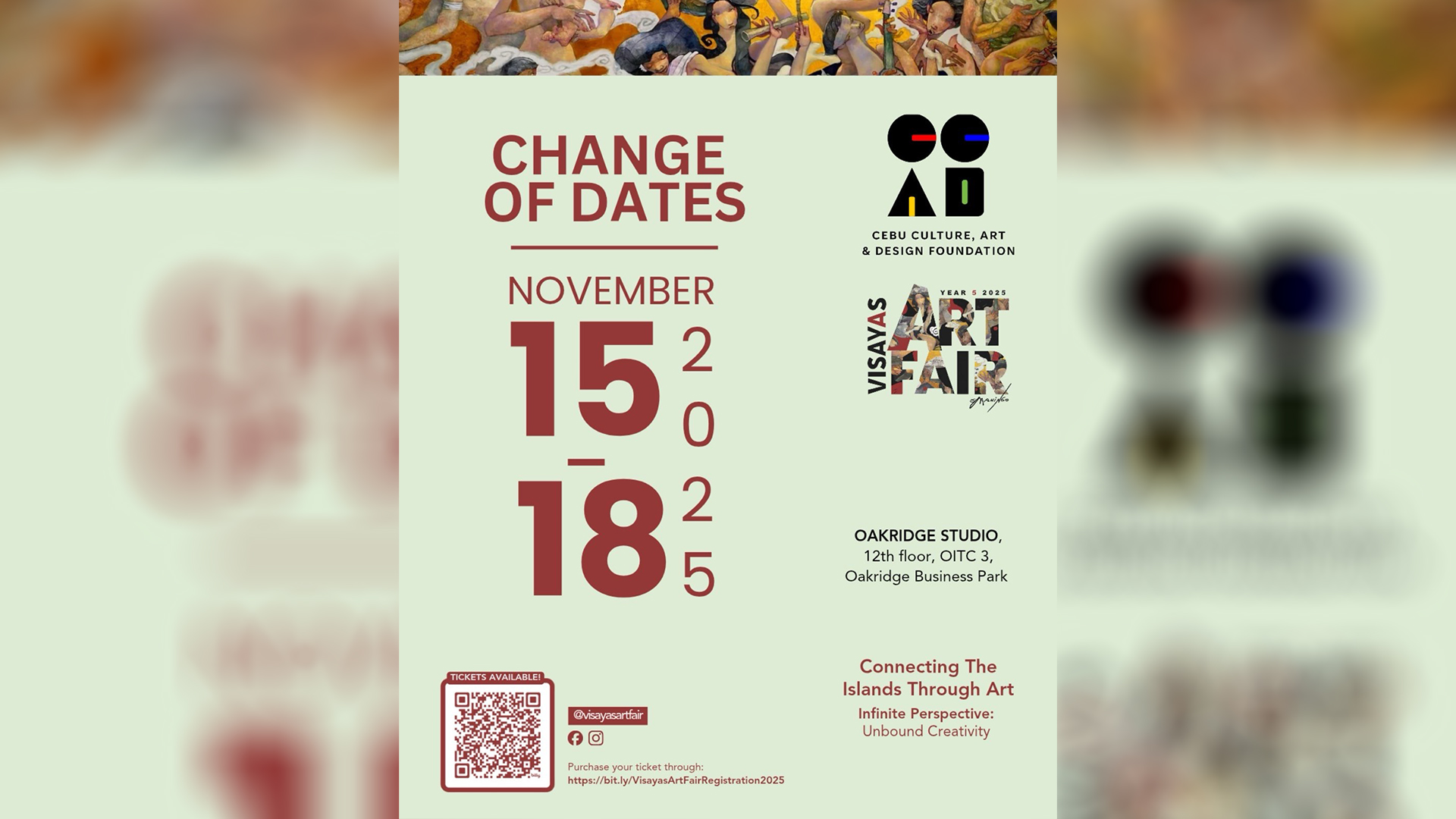
by Jing Ramos
This year’s Visayas Art Fair marks its 5th anniversary, celebrating the theme “Infinite Perspectives: Unbound Creativity.” The fair continues its mission of bridging creativity, culture, and community in the country. This milestone edition strengthens its partnership with the National Commission for Culture and the Arts and expands collaborations with regional art organizations and collectives—reinforcing its role as a unifying platform for Philippine art.
VAF5 features the works of Gil Francis Maningo, honoring the mastery of his gold leaf technique on opulent portraits of the Visayan muse Carmela, reflecting spiritual awareness.

Gil Francis Maningo is celebrated for his gold leaf technique.
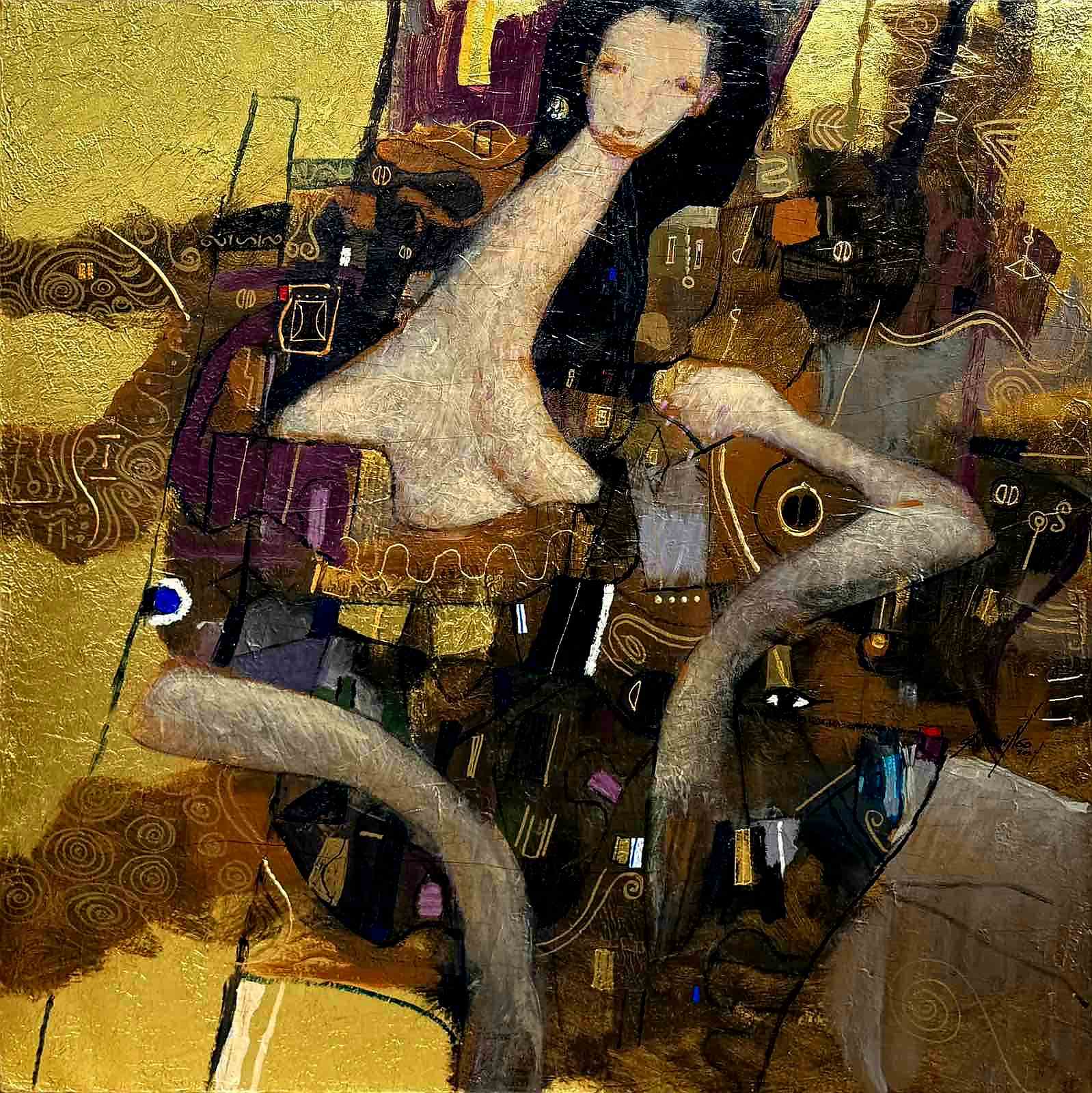
Gil Francis Maningo’s recurring theme of his Visayan muse “Carmela”.
Another featured artist is Danny Rayos del Sol, whose religious iconography of Marian-inspired portraits offers a profound meditation on the sacred and the sublime. This collaboration between two visual artists sparks a dialogue on the Visayan spirit of creativity and resilience. Titled “Pasinaya,” this dual showcase explores gold leaf as a medium of light and transcendence.
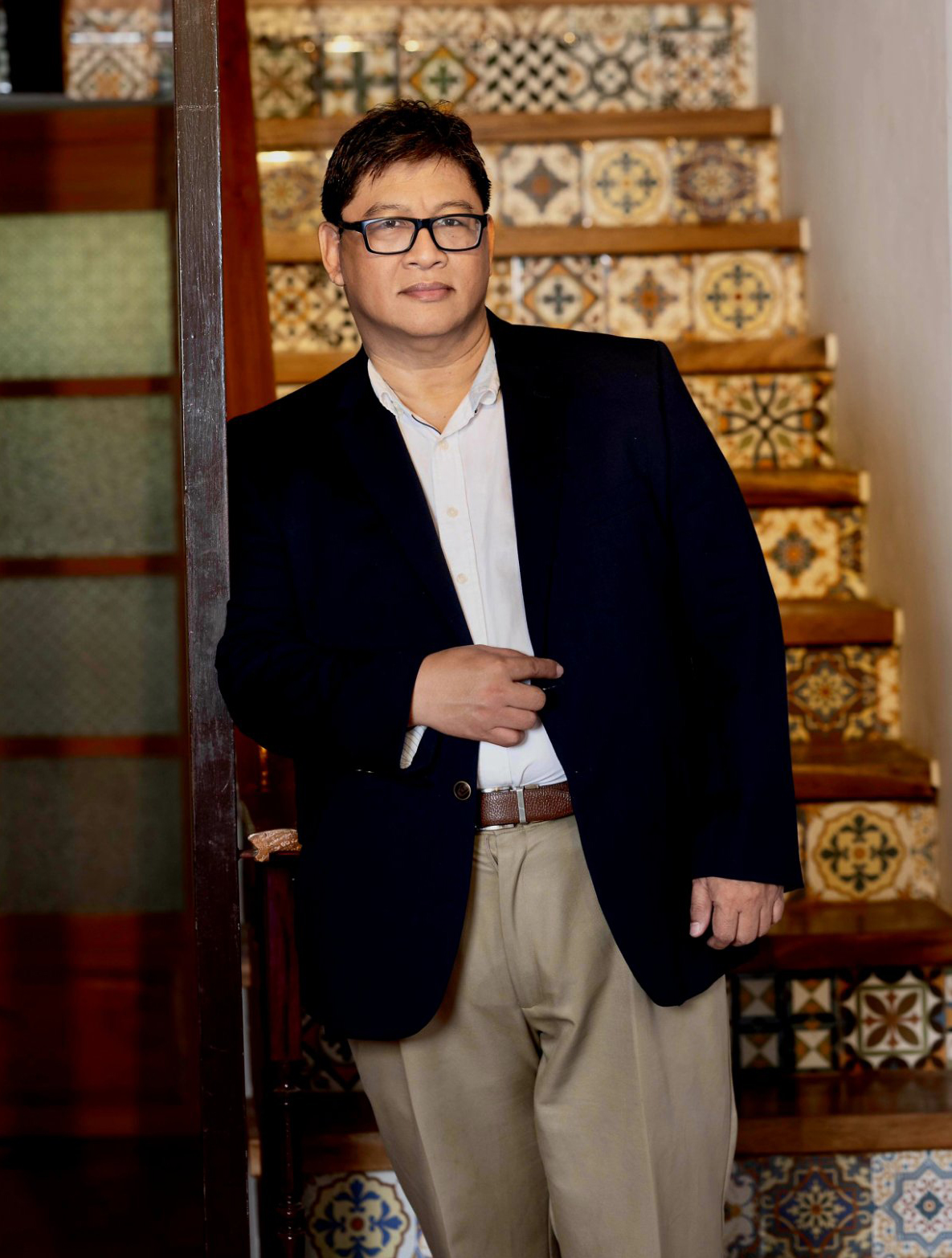
Artist Danny Reyes del Sol
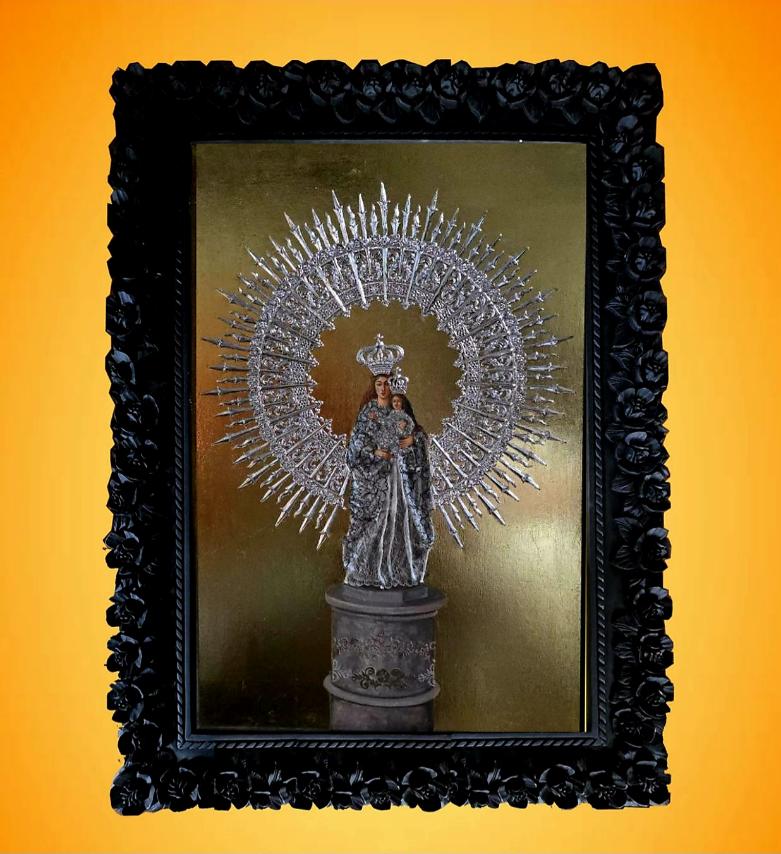
Danny Reyes del Sol’s religious iconography.
Now in its fifth year, the Visayas Art Fair has influenced a community of artists, gallerists, brokers, collectors, museum curators, and art critics—constructing a narrative that shapes how we approach and understand the artist and his work. This combination of factors, destined for popular consumption, illustrates the ways in which art and current culture have found common ground in a milieu enriched by the promise of increased revenue and the growing value of artworks.
Laurie Boquiren, Chairman of the Visayas Art Fair, elaborates on the theme, expressing a vision that celebrates the boundless imagination of unique artistic voices:
“Infinite Perspectives speaks of the countless ways artists see, interpret, and transform the world around them—reminding us that creativity knows no single point of view. Unbound Creativity embodies freedom from convention and controlled expression, allowing every artist to explore and experiment without borders.”

Laurie Boquiren, Chairman of the Visayas Art Fair has tirelessly championed the creative arts for the past five years.
Arts & Culture
Kultura. Kapital. Kasalukuyan: Art that Speaks of Today

by Jose Carlos G. Campos, Board of Trustees National Museum of the Philippines
The National Museum of the Philippines (NMP) and the Bangko Sentral ng Pilipinas (BSP) recently teamed up to prove that money isn’t just for counting—it’s also for curating! Their latest joint exhibition, Kultura. Kapital. Kasalukuyan: Contemporary Art from the Bangko Sentral ng Pilipinas Collection, is now open, and it’s a real treat for art lovers and culture buffs alike.
On display are gems from the BSP’s contemporary art collection, including masterpieces by National Artist Benedicto Cabrera (Bencab), along with works by Onib Olmedo, Brenda Fajardo, Antipas Delotavo, Edgar Talusan Fernandez, and many more. Some of the artists even showed up in person—Charlie Co, Junyee, Imelda Cajipe-Endaya, Demi Padua, Joey Cobcobo, Leonard Aguinaldo, Gerardo Tan, Melvin Culaba—while others sent their family representatives, like Mayumi Habulan and Jeudi Garibay. Talk about art running in the family!

Deputy Governor General of the BSP, Berna Romulo Puyat
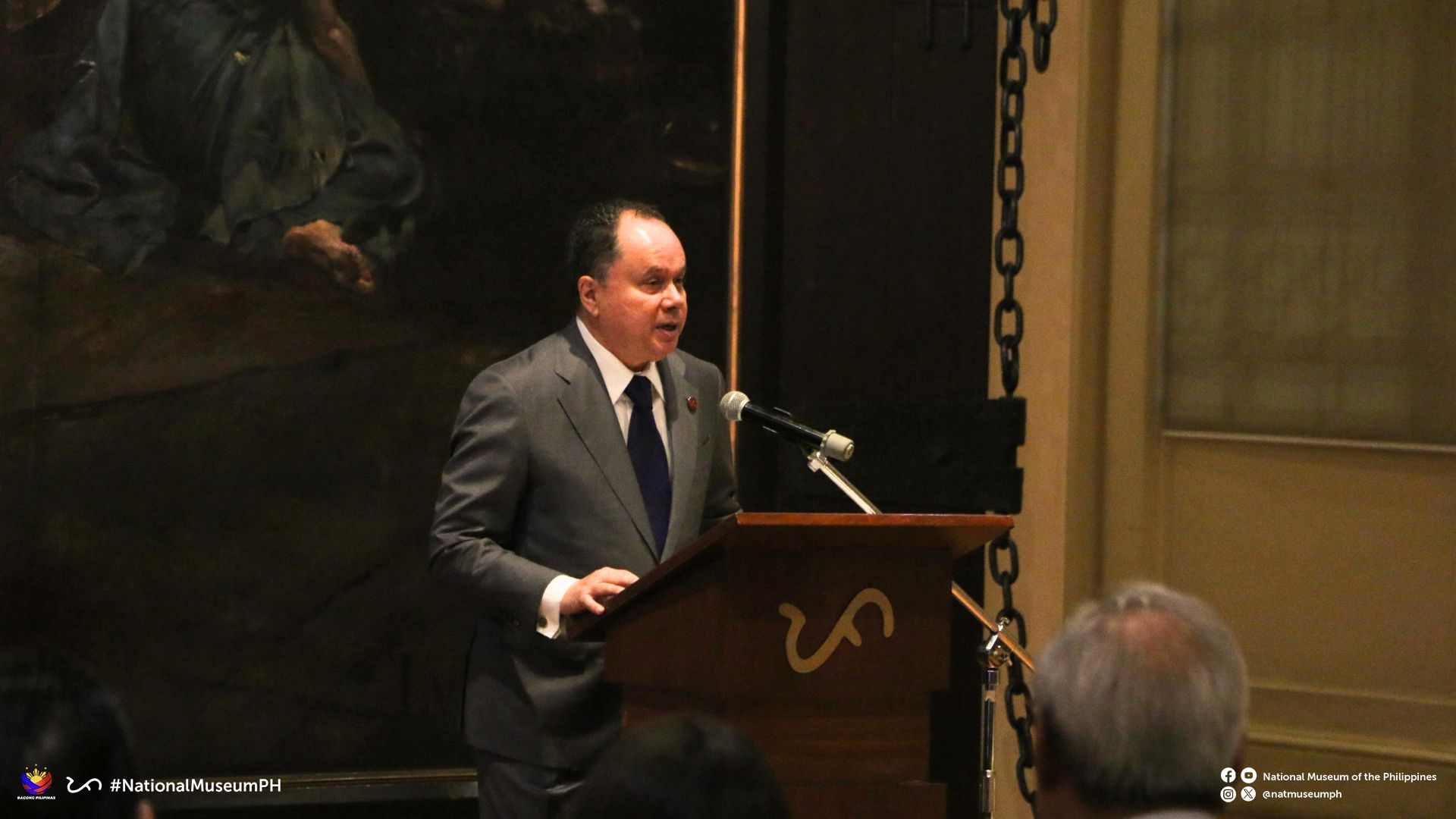
Chairman of NMP, Andoni Aboitiz
The BSP Governor Eli M. Remolona, Jr. and members of the Monetary Board joined the event, alongside former BSP Governor Amando M. Tetangco, Jr., Ms. Tess Espenilla (wife of the late Nestor A. Espenilla, Jr.), and the ever-graceful former Central Bank Governor Jaime C. Laya, who gave a short but enlightening talk about the BSP art collection.
From the NMP, Chairman Andoni Aboitiz, Director-General Jeremy Barns, and fellow trustees NCCA Chairman Victorino Mapa Manalo, Carlo Ebeo, and Jose Carlos Garcia-Campos also graced the occasion. Chairman Aboitiz expressed gratitude to the BSP for renewing its partnership, calling the exhibition a shining example of how financial institutions can also enrich our cultural wealth.
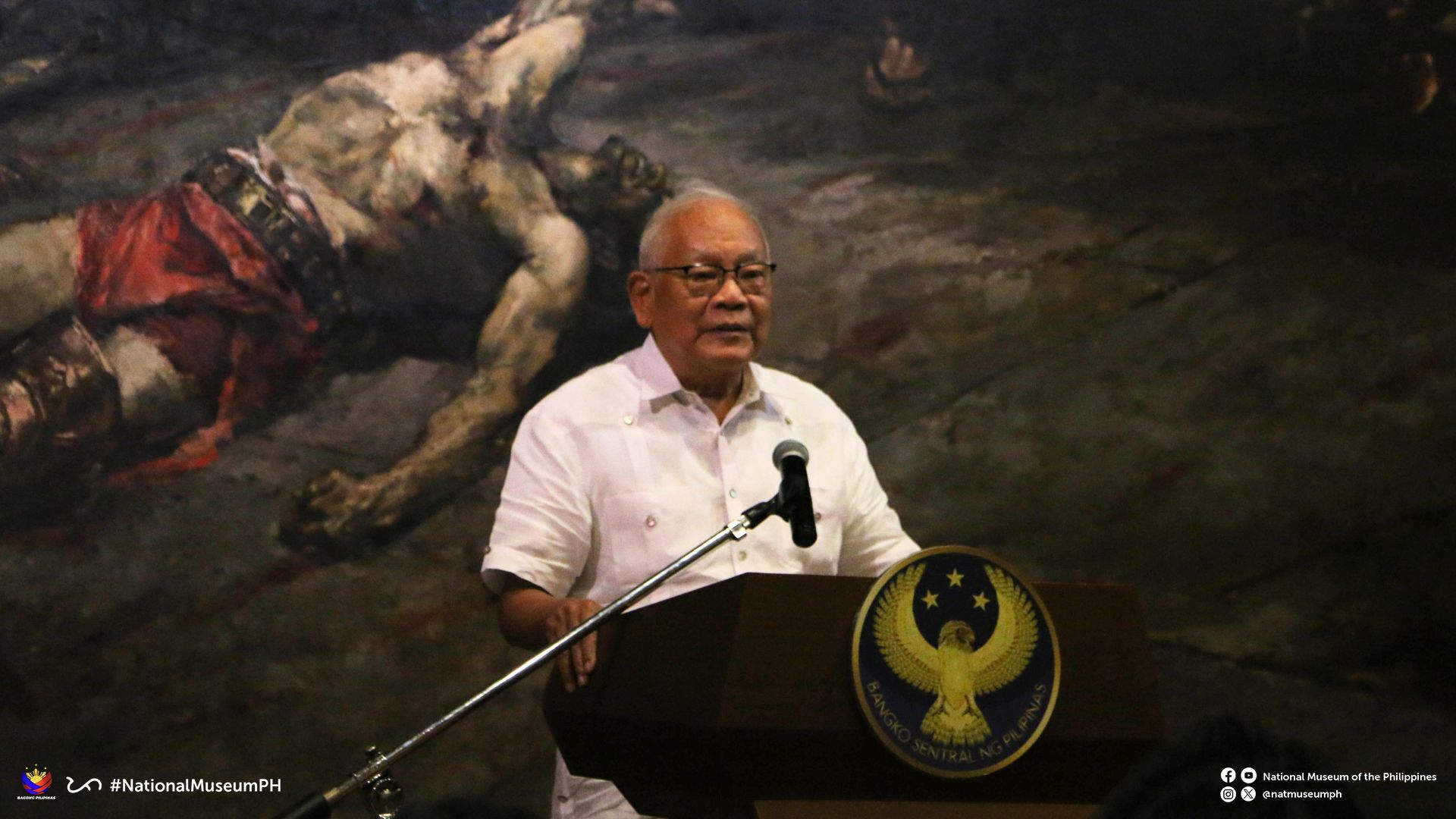
Former Governor of BSP Jaime Laya
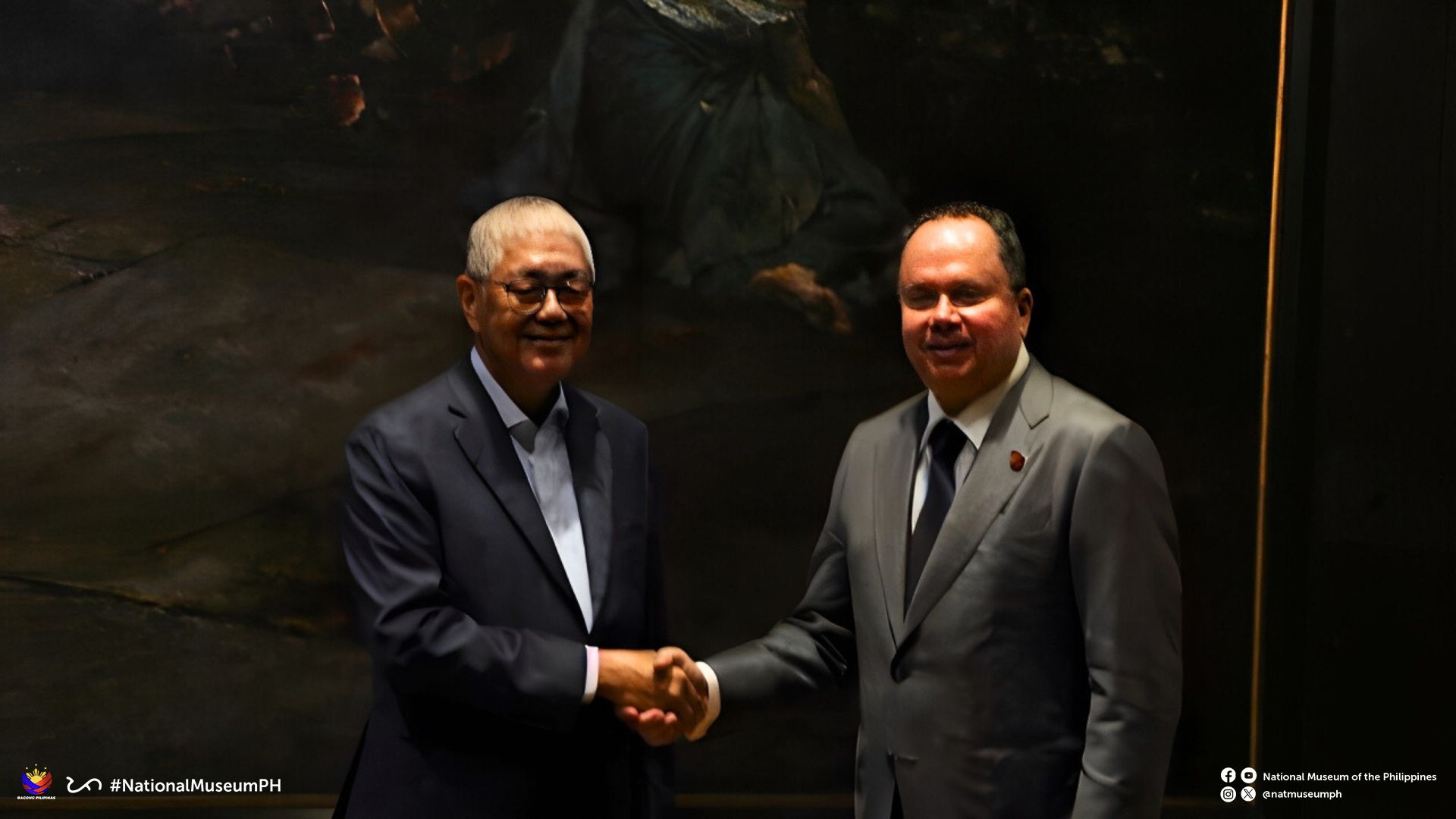
Governor of BSP Eli M. Remona and Chairman of NMP Board Andoni Aboitiz

Artist Charlie Co
Before the official launch, a special media preview was held on 5 August, hosted by BSP Deputy Governor Bernadette Romulo-Puyat and DG Jeremy Barns. It gave lucky guests a sneak peek at the collection—because sometimes, even art likes to play “hard to get.”
The exhibition Kultura. Kapital. Kasalukuyan will run until November 2027 at Galleries XVIII and XIX, 3/F, National Museum of Fine Arts. Doors are open daily, 9:00 AM to 6:00 PM. So if you’re looking for something enriching that won’t hurt your wallet (admission is free!), this is your sign to visit. After all, the best kind of interest is cultural interest.

Monetary Board of the BSP, Walter C. Wassmer

Luis Yee, Jr. aka ‘Junyee’ The Artist beside his Sculpture

Arvin Manuel Villalon, Acting Deputy Director General for Museums, NMP with Ms. Daphne Osena Paez
Arts & Culture
Asia’s Fashion Czar I Knew as Tito Pitoy; Remembrance of a Friendship Beyond Fashion with Designer Jose R. Moreno

by Jose Carlos G. Campos, Board of Trustees National Museum of the Philippines
My childhood encounter with the famous Pitoy Moreno happened when I was eight years old. My maternal grandmother, Leonila D. Garcia, the former First Lady of the Philippines, and my mother, Linda G. Campos, along with my Dimataga aunts, brought me to his legendary atelier on General Malvar Street in Malate, Manila. These were the unhurried years of the 1970s.
As we approached the atelier, I was enchanted by its fine appointments. The cerulean blue and canary yellow striped canopies shaded tall bay windows draped in fine lace—no signage needed, the designer’s elegance spoke for itself. Inside, we were led to a hallway adorned with Art Deco wooden filigree, and there was Pitoy Moreno himself waiting with open arms—”Kamusta na, Inday and Baby Linda,” as he fondly called Lola and Mommy.
“Ahhh Pitoy, it’s been a while,” Lola spoke with joy.
“Oh eto, may kasal na naman,” my mom teasingly smiled.
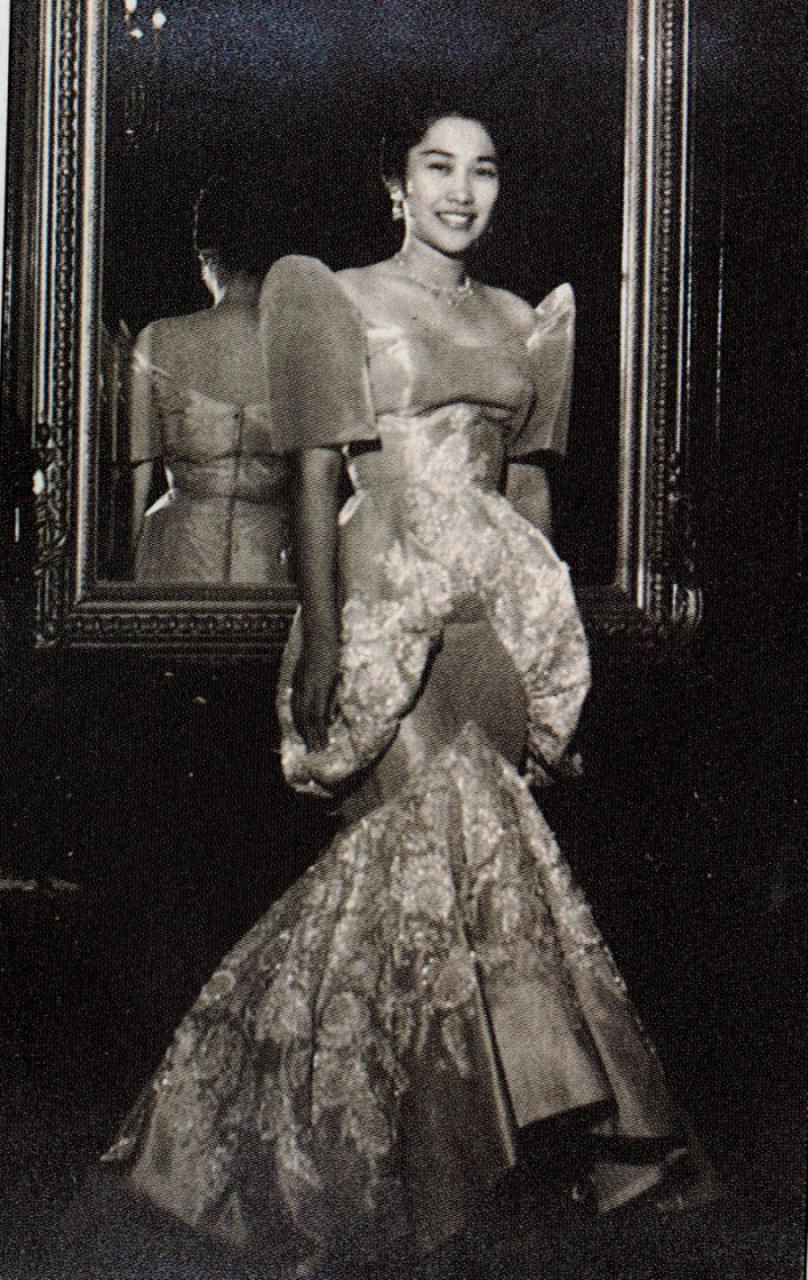
Linda Garcia Campos and Pitoy Moreno’s friendship started when they were students in the University of the Philippines in Diliman.
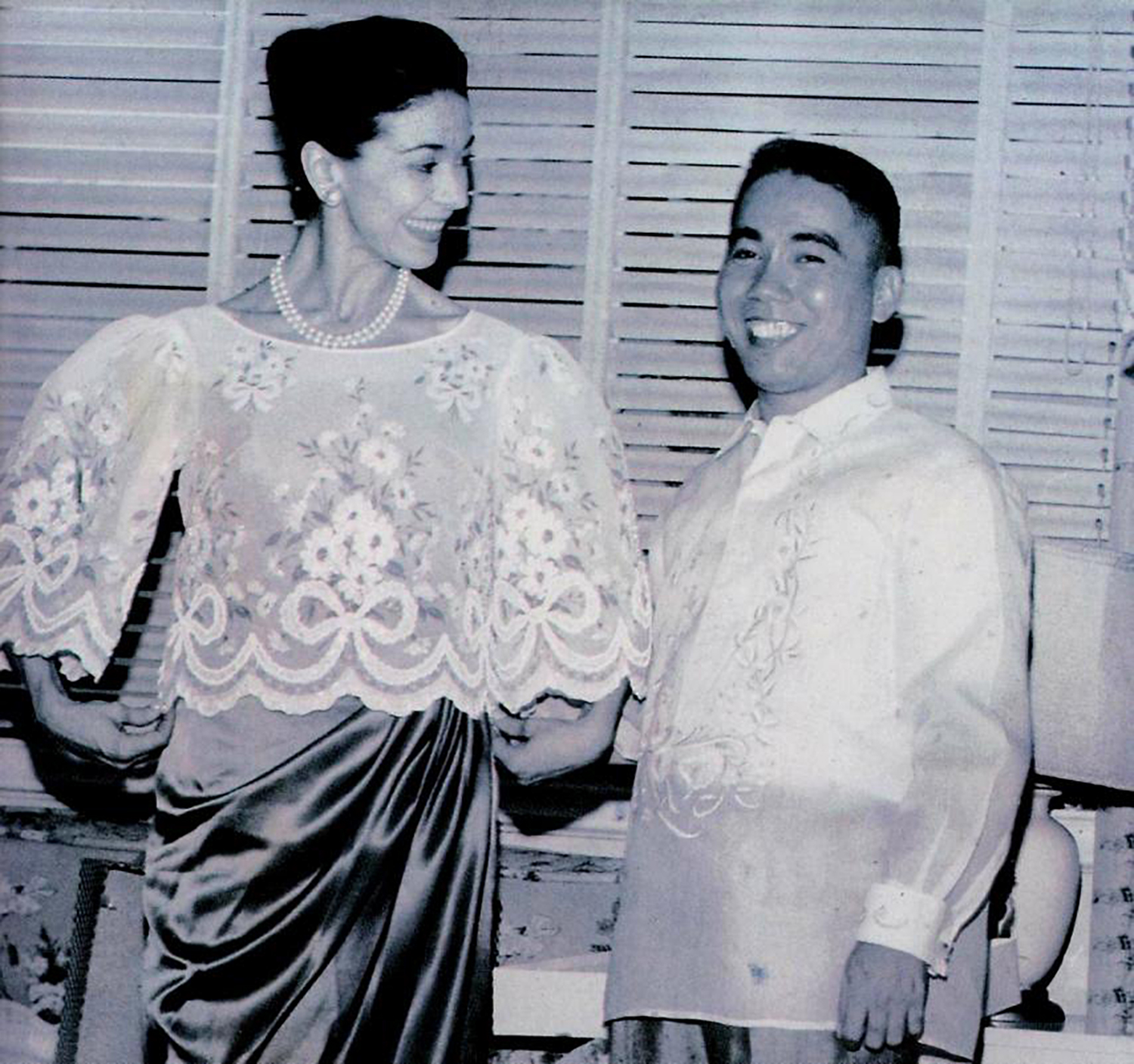
When Dame Margot Fonteyn came for a visit to Manila, Pitoy Moreno dressed her up for an occasion.
We had entered a world of beauty—porcelain figurines, ancient earthenware and pre-colonial relics. It was like stepping into a looking glass, only Pitoy could have imagined.
Destiny led me back years later when my mother Linda told me that Pitoy Moreno was working on his second book, Philippine Costume, and needed research material and editorial advice. At this point, around the 1990s, I was in between assignments—unsure of how a broadcasting graduate like me could possibly contribute to a fashion icon’s masterpiece. Fortunately, I agreed to the project.
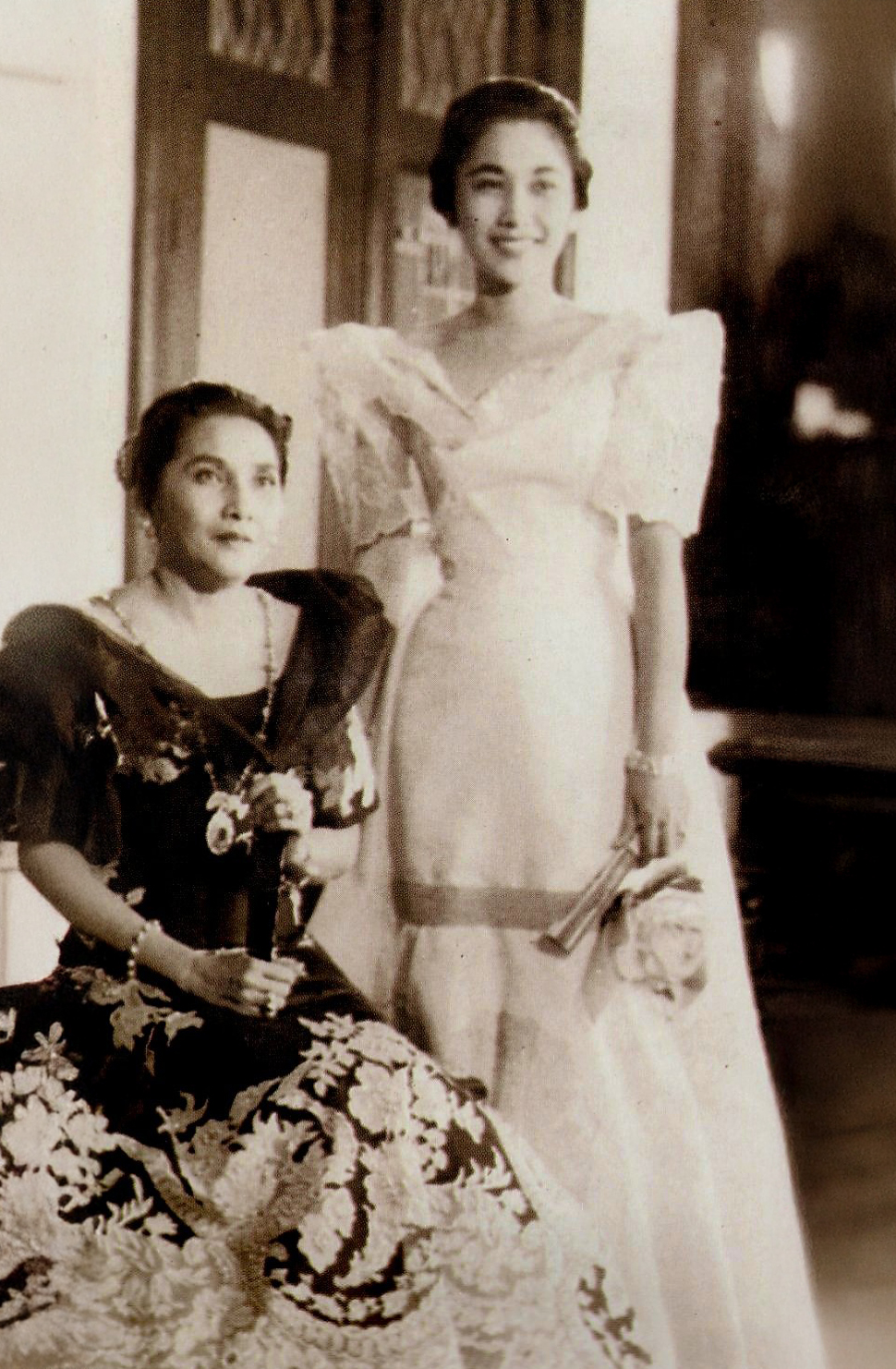
Former First Lady Leonila D. Garcia and daughter Linda G. Campos in Malacañang Palace.
Returning to the designer’s atelier brought back a rush of pleasant memories. The gate opened, and there stood Pitoy Moreno, beaming as always.
“Come in, hijo. Let me show you what I have in mind—and call me Tito Pitoy, okay?”
He led me to his worktable.
“I want to publish a book that tells the story of Philippine fashion—from our pre-colonial roots to the present. A designer’s collection of images and heritage expressed in clothing.”
I was awestruck. “How can I help you?” I inquired.
“Did you know that your mother, Linda, was my barkada in the University of the Philippines in Diliman?” he grinned.
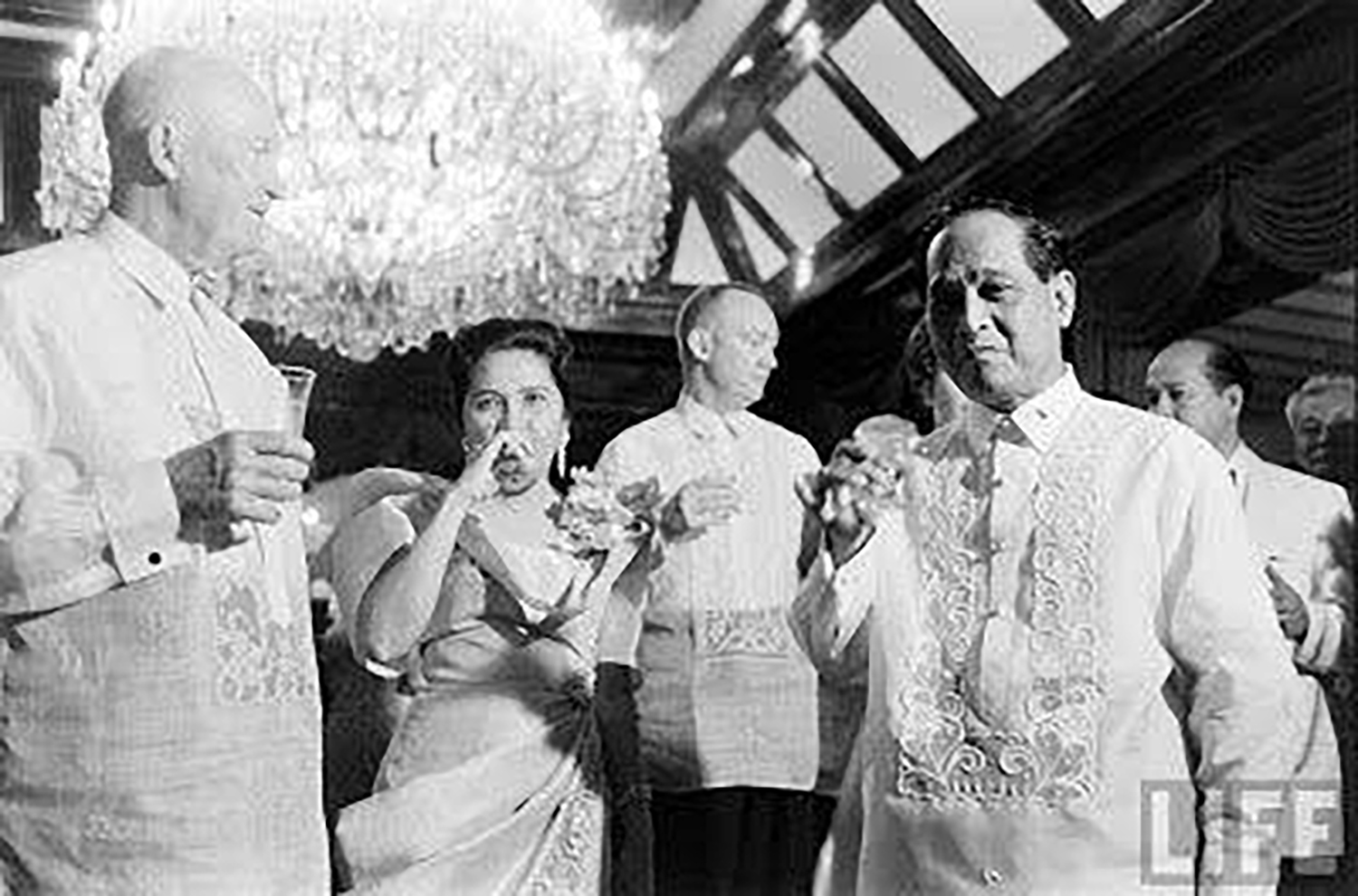
US President Dwight Eisenhower with First Lady Leonila Garcia and President Carlos Garcia in a state dinner at Malacañang Palace in Manila.
That friendship soon led to one of the proudest moments of the designer’s life. He had the opportunity to dress not only the First Lady Leonila D. Garcia but also President Carlos P. Garcia during his term. It was also during this time that the President of the United States, Dwight Eisenhower, came for an official visit to Manila. The designer was able to make clothes for the President, his daughter, and his staff.
“Eisenhower even asked for discounts on the barong Tagalog,” Tito Pitoy laughed.
Tito Pitoy then asked if I could find a terno he had made for my Lola, the former First Lady, which she wore for President Eisenhower’s state visit in 1960.
“How about her other ternos, dated from the 1920s to the 1960s?” I offered.
He lit up.
I scoured my Lola’s extensive closet—it felt like unearthing a legacy. Tucked behind layers of vintage ternos from countless fashion designers, I found that terno, which was photographed by Dick Baldovino along with other pieces for the book project. Once the project was finished and I myself had moved on, my bond with Tito Pitoy never wavered.
When my Lola passed away, he was deeply touched when I personally informed him of the sad news. Once, at the wake of former Vice President Salvador Laurel, he asked me to assist him in the placement of the medals in the chapel.
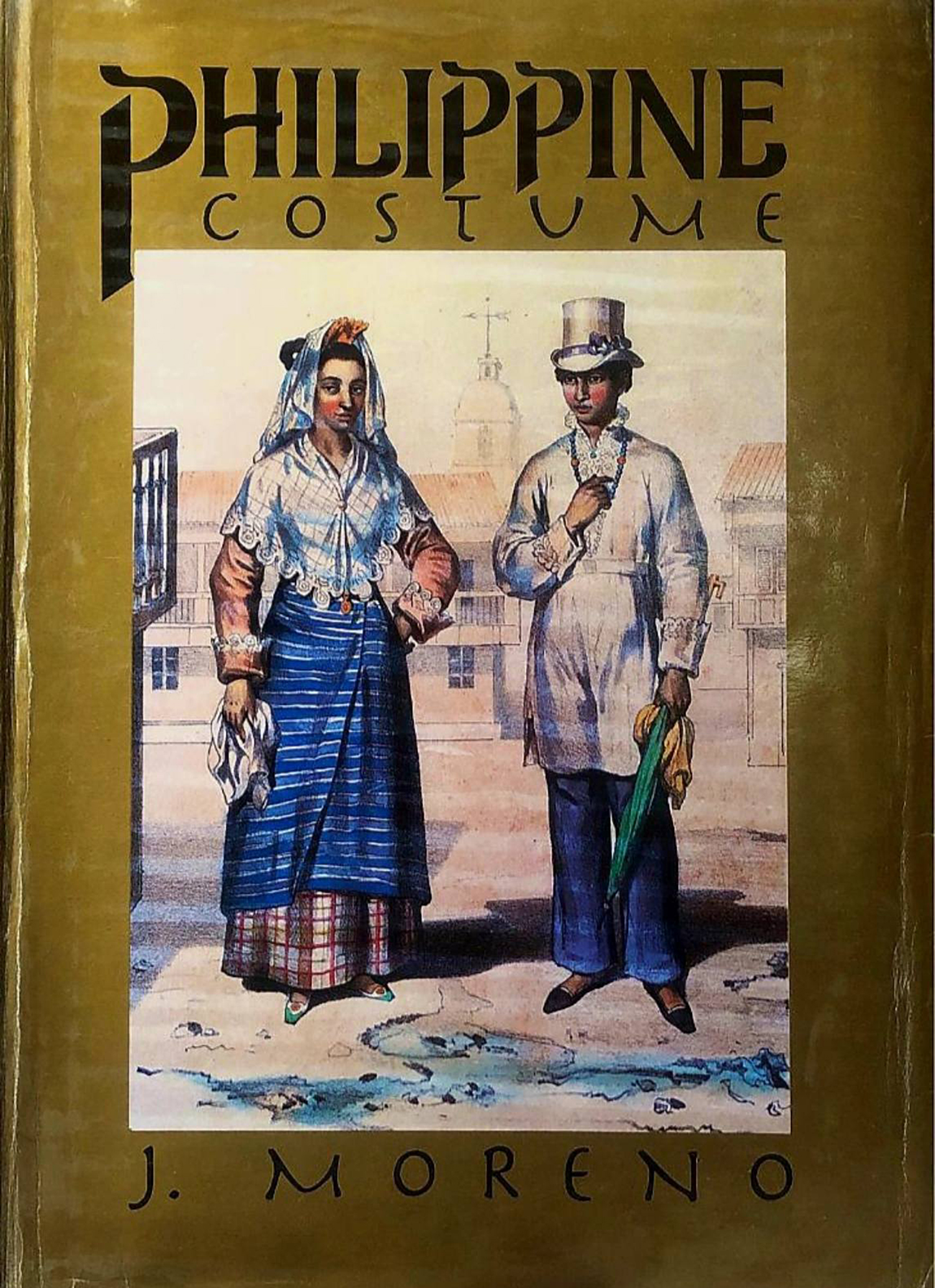
Philippine Costume by Jose Moreno is the designer’s collection of images and heritage expressed in clothing.
Tito Pitoy later invited me to his 80th birthday celebration—a dazzling Manila affair in 2012. During the evening’s festivities, he handed me a printed copy of Philippine Costume and added warmly,
“Thank you, hijo. I’ll call on you for the next one.”
The highlight of his career—and his most unforgettable moment—came during the Metro Magazine Gala fashion show: A Tribute to Pitoy Moreno, Fashion Icon. A collection of evening gowns spanning six decades—many of them unseen and tucked away in his atelier—were revealed that night. When the finale came, Tito Pitoy walked the stage, triumphant and waving to a sea of admirers. Longtime friends from the industry, society’s finest, and fashionistas rose from their seats and gave him a standing ovation.
It wasn’t just to celebrate his craft and ingenuity—it was to honor the man who brought elegance, history, and heart in every stitch.
-

 Style2 months ago
Style2 months agoHappy Melendres Traipsing Around Manhattan in Non-Stop Armani
-
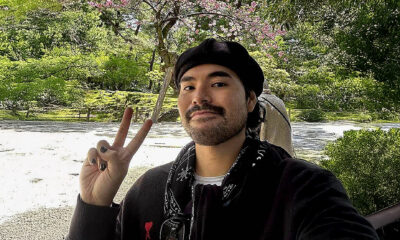
 Prime Target2 months ago
Prime Target2 months agoMiko Sarmiento: Turning Silk Scarves Into Works of Art
-
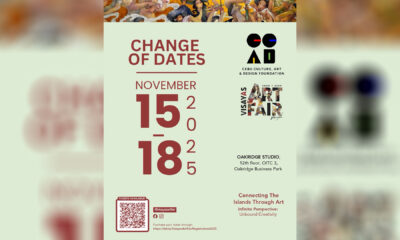
 Arts & Culture1 month ago
Arts & Culture1 month agoVisayas Art Fair Year 5: Infinite Perspectives, Unbound Creativity
-
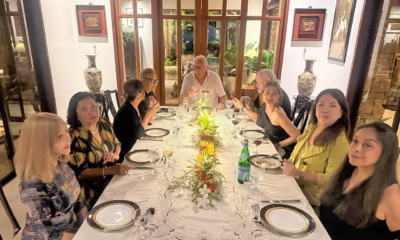
 The Scene3 months ago
The Scene3 months agoAnother Elegant Dinner at Chez Marguerite
-

 Prime Target3 months ago
Prime Target3 months agoLuna Vdl–Endless Summers in Siargao
-

 QuickFx3 months ago
QuickFx3 months agoI Lost It at the Movies: Five of the Most Significant Films of the 1960s
-

 Travel1 month ago
Travel1 month agoAutumn in Istanbul: Fellow Travellers Share Turkish Delights
-

 The Scene4 weeks ago
The Scene4 weeks agoBe Fabulous: Dr. Fremont Base’s 50th Birthday Party Echoes the Disco-Glam Era





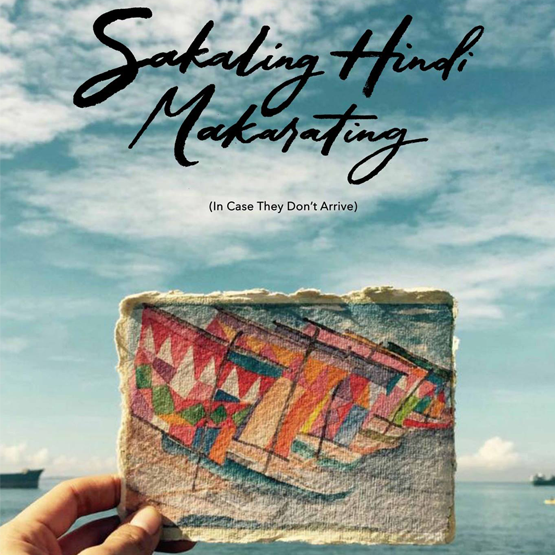




You must be logged in to post a comment Login